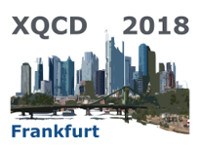Sprecher
Herr
Captain R. Singh
(Birla Institute of Technology and Science, Pilani)
Beschreibung
Quarkonia are produced in the heavy ion collisions and their production is modified compared with elementary collisions. This modification in the production of Quarkonia happens due to the presence of hot and dense QCD matter, named as quark-gluon plasma (QGP) formed in ultra relativistic heavy ion collisions. Existence of such kind of medium is observed in assymetric (p-Pb) collisions at 5.02 TeV collision energy at CERN Large Hadron Collider. Investigation of QGP in p-Pb collisions can be obtained by suppression of quarkonium higher resonaces such as 2S states which are are fine observable of QGP formation due their small dissociation temperature and short life time. We present here “Unified model of Quarkonia Suppression (UMQS)” a comprehensive study based on color screening, collisional damping and gluonic dissociation caused by absorption of gluon which led quark anti-quark pair transition from color singlet to color octet state. We have also taken cold nuclear matter effect, mainly shadowing effect, in our consideration as it modifies the quarkonia production in heavy ion collisions. We employ the above model to analyse the data on quarkonia suppression measured in terms of nuclear modification factor, versus transverse momentum, and centrality obtained from collisions at TeV LHC energy. We find that our model describes the LHC data reasonably well.
Autor
Herr
Captain R. Singh
(Birla Institute of Technology and Science, Pilani)

